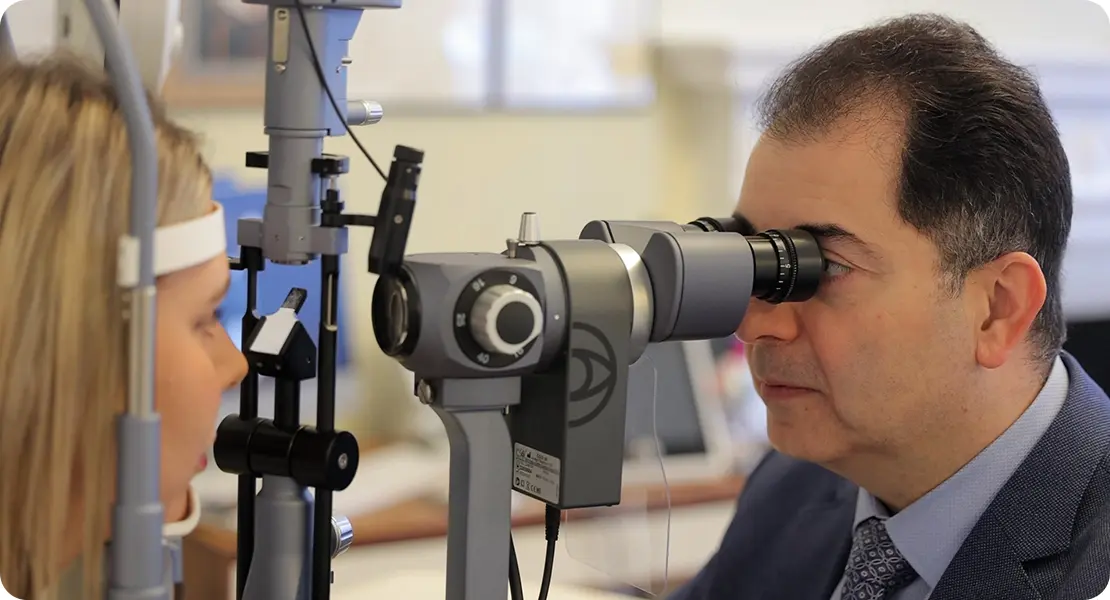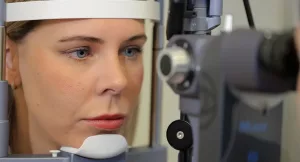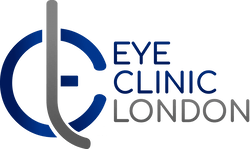What Age Is Best for RLE Surgery?

If you’re considering refractive lens exchange (RLE) to improve your vision, you might wonder about the best time to undergo the procedure. Age is a critical factor in determining candidacy and predicting the success of RLE.
RLE is a procedure where your natural lens is replaced with an artificial intraocular lens (IOL) to correct vision issues like presbyopia, hyperopia, myopia, and early cataracts. Unlike LASIK, RLE is often considered for patients over the age of 40–45 because of age-related changes in the eye.
In this guide, I’ll explain the ideal age range for RLE, why it’s often recommended after 45, and the key factors that affect the timing for optimal results. By the end, you’ll have a clear understanding of when RLE might be right for you.
Understanding Refractive Lens Exchange (RLE)
If you’re considering ways to improve your vision, you might have come across Refractive Lens Exchange, or RLE, sometimes called clear lens extraction. You can think of it as being quite similar to cataract surgery. During the procedure, your natural lens is carefully removed and replaced with a synthetic intraocular lens (IOL), which can dramatically improve how you see.
Unlike LASIK, which reshapes the cornea to correct your vision, RLE focuses on the lens inside your eye. This means it can address vision issues that LASIK can’t, making it a particularly effective option if you’re dealing with:
– Age-related presbyopia: You know that frustration when reading glasses become a constant companion? RLE can help reduce or even eliminate the need for them.
– Dependence on glasses or contact lenses: Whether you’re tired of always reaching for your specs or struggling with contacts, RLE can give you more freedom.
– Early cataracts: If your lens is starting to cloud, RLE can not only restore your clarity of vision but also prevent further cataract development.
Because RLE replaces your natural lens, the results are long-lasting. You’re not just changing the shape of your cornea you’re giving your eyes a new, clear lens that can help you see clearly for years to come.
Why Age Matters for RLE

Your age plays a big role in whether Refractive Lens Exchange (RLE) is the right choice for you. Here’s why it’s important to consider:
Presbyopia and Age-Related Vision Changes
If you’re over 40, you’ve probably noticed that reading small print or focusing on close-up tasks is getting harder. This is called presbyopia, and it happens because your natural lens gradually loses its flexibility. With RLE, you can replace that aging lens with an artificial intraocular lens (IOL), which can restore your near, intermediate, and distance vision. Essentially, RLE can give you back the ability to see clearly without relying on reading glasses or bifocals.
Early Cataract Formation
Even if you’re in your 40s or 50s, your lens may start developing early cataracts, which can make your vision blurry, cloudy, or hazy. If this sounds familiar, RLE can be a smart option. Not only can it correct existing refractive errors, but it can also prevent further cataract progression, helping you maintain clearer vision for years to come.
Corneal Thickness and Alternative Procedures
If you’re younger and considering LASIK or other corneal-based procedures, your cornea may be thick enough for reshaping. However, as you get older, natural changes in your cornea or even previous eye surgeries can make RLE a safer and more effective choice. By focusing on the lens rather than the cornea, RLE provides a long-term solution that doesn’t rely on corneal thickness or shape.
Long-Term Vision Stability
Another reason age matters is the long-term stability RLE offers. As you get older, your eyes naturally change, and procedures like LASIK may not fully address these evolving issues. RLE not only corrects your vision now but can also help protect it against age-related changes in the future.
Ideal Age Range for RLE

There isn’t a strict age cut-off for Refractive Lens Exchange (RLE), but certain age ranges tend to benefit most. Here’s what you should know:
Over 45: Around this age, your natural lens starts losing elasticity, making presbyopia more noticeable. If you’re finding it harder to read small print or see up close, RLE could help restore your near, intermediate, and distance vision.
50–65: This is the most common age range for RLE. Early cataracts often begin to form during these years, and presbyopia becomes more pronounced. If you’re looking to reduce your dependence on glasses or contacts while also addressing early cataracts, RLE can be an ideal solution.
Younger patients with high refractive errors: Occasionally, RLE may be considered for people under 45, especially if you have very high myopia (nearsightedness) or hyperopia (farsightedness). However, this is evaluated carefully on a case-by-case basis, depending on your eye health and vision needs.
Ultimately, RLE is a personalised decision. Your age is just one factor. Your eye health, lifestyle, and vision goals are just as important when deciding whether RLE is right for you. A thorough consultation with an eye specialist can help you determine the best option for your eyes and your lifestyle.
Factors Affecting the Timing of RLE
While age is an important consideration, several other factors can influence when RLE might be the right choice for you. Understanding these can help you and your eye specialist make the best decision for your vision and lifestyle.
Your Vision Needs
Think about how your vision affects your day-to-day life. Are you struggling to read small print, see your computer screen clearly, or drive comfortably at night? If these tasks are becoming difficult, you might benefit from earlier intervention. RLE can address both near and distance vision issues, helping you see clearly without constantly reaching for glasses or contacts. The sooner you address these challenges, the less they impact your daily activities.
Lens Health
The condition of your natural lens plays a major role in timing. Even if you’re not experiencing significant vision problems yet, early cataract formation can subtly blur your vision over time. If your eye specialist detects the beginnings of a cataract, scheduling RLE sooner rather than later can prevent further deterioration and give you clearer vision in the long run.
Overall Eye Health
Other eye conditions can also affect your candidacy and the timing of RLE. Conditions such as glaucoma, macular degeneration, or previous eye surgeries can impact how and when RLE is performed. That’s why a thorough eye examination is essential it ensures your eyes are healthy enough for the procedure and that the timing is optimal for achieving the best results.
Lifestyle Considerations
Your lifestyle can heavily influence when RLE is appropriate. If your work, hobbies, or daily activities require sharp vision for reading, computer use, driving, or sports, you may benefit from having RLE earlier. The goal is to ensure your vision supports your lifestyle rather than limiting it. For example, if you travel frequently, spend long hours on digital devices, or enjoy activities like golfing or crafting, improving your vision sooner can make a big difference in your quality of life.
Personal Goals and Expectations
Finally, your personal goals and expectations play a key role. Are you looking to reduce dependence on glasses, prevent cataract progression, or achieve long-term vision stability? Understanding what you want from your vision allows your eye specialist to recommend the best timing for RLE tailored to your needs.
By considering all these factors together vision needs, lens health, overall eye health, lifestyle, and personal goals you and your doctor can determine the most suitable timing for RLE, ensuring you achieve the best possible outcomes for your eyes and daily life.
Benefits of RLE at the Right Age
Choosing RLE at the right stage of life can make a big difference in how well the procedure works for you. When timed appropriately, RLE offers a range of benefits that go beyond simple vision correction:
Long-Term Vision Correction
One of the biggest advantages is that RLE can significantly reduce or even eliminate your dependence on glasses or contact lenses. Whether you need to read, work on a computer, or drive, you can enjoy clearer vision throughout the day without constantly reaching for corrective lenses.
Prevention of Cataract Progression
If you’re starting to develop early cataracts, RLE can act as a proactive solution. By replacing your natural lens before cataracts worsen, you can prevent future vision deterioration and maintain clarity for years to come.
Predictable and Stable Outcomes
When RLE is performed at the right age, you’re more likely to experience stable and predictable results. Age-appropriate candidates generally face fewer complications and achieve long-term satisfaction, giving you peace of mind about your vision.
Customisable Options
Modern intraocular lenses (IOLs) are highly versatile. Depending on your vision needs, your eye specialist can choose lenses that correct presbyopia, astigmatism, or even provide multifocal vision. This means you can enjoy improved near, intermediate, and distance vision tailored specifically to how you live your life.
Enhanced Quality of Life
Beyond the technical benefits, RLE can have a real impact on your everyday life. Imagine reading without squinting, enjoying your favourite hobbies, or driving comfortably at night all without relying on glasses or contacts. The right timing ensures you get the most out of these improvements, helping you maintain independence and confidence in your vision.
Risks of RLE and Age Considerations
While RLE is generally safe, the procedure carries some risks that may be influenced by age:
– Younger patients (<40): Higher risk of long-term changes in the eye and less predictable presbyopia correction.
– Older patients (>70): Increased risk of age-related complications such as dry eye, slower healing, or retinal issues.
Your ophthalmologist will assess these risks based on your eye health, age, and vision needs to determine the safest timing.
Why RLE Is Popular After 45
You might wonder why so many people consider Refractive Lens Exchange (RLE) after the age of 45. The answer largely comes down to natural changes in your eyes that occur around this age.
Presbyopia Becomes More Noticeable
If you’re over 45, you’ve probably noticed that reading glasses are becoming a regular part of your life. This is due to presbyopia, a natural stiffening of your lens that makes focusing on near objects more difficult. RLE can help by replacing your natural lens with a multifocal intraocular lens (IOL), allowing you to see clearly at near, intermediate, and distance ranges without constantly relying on glasses.
Early Cataracts May Begin to Develop
Even in your 40s and 50s, your lens may start to cloud slightly, causing blurry or hazy vision. Choosing RLE at this stage can be a proactive step. By replacing your lens early, you can prevent further cataract progression and maintain sharper vision for the long term.
Improved Quality of Life and Long-Term Vision Stability
RLE isn’t just about seeing better immediately. It’s about preserving your vision over time.. By addressing age-related changes proactively, you can enjoy a more stable, reliable visual experience in daily life, whether you’re reading, driving, or working on a computer.
Why RLE Is Often Chosen Over LASIK
Many patients over 45 prefer RLE to LASIK, and for good reason:
– LASIK reshapes the cornea and cannot correct presbyopia effectively, so you’d still need reading glasses.
– Corneal thickness may have decreased with age, making laser reshaping less safe or effective.
– RLE provides more permanent and predictable results for vision changes associated with ageing.
Ultimately, RLE offers a long-term solution that addresses the natural changes in your eyes, giving you clearer, more comfortable vision and reducing your reliance on glasses or contacts.
Pre-Procedure Assessment
Before undergoing RLE, you will receive a comprehensive eye examination, including:
– Measurement of refractive error
– Assessment of corneal thickness and curvature
– Evaluation of lens opacity and cataract formation
– Checking for retinal or optic nerve conditions
This assessment ensures that RLE is safe and will deliver the best results for your specific vision needs.
Recovery and Results
If you decide to go ahead with RLE, you’ll be pleased to know that recovery is usually straightforward and relatively quick. Most people notice clearer vision within just a few days, though your eyes continue to adjust over the following weeks. Full visual stability is typically achieved within 4–6 weeks, allowing you to enjoy your improved vision comfortably.
During the recovery period, you might experience minimal discomfort, such as mild irritation or a feeling of dryness. This can usually be managed with prescribed eye drops, some rest, and by following your eye specialist’s post-operative instructions.
Because RLE replaces your natural lens with a synthetic intraocular lens (IOL), the results are long-lasting. Many patients find that they can reduce or even eliminate their dependence on glasses or contact lenses, whether for reading, working on a computer, or enjoying hobbies. Over time, RLE can make daily tasks easier and more enjoyable, improving your overall quality of life and giving you confidence in your vision for years to come.
Choosing the Right RLE Option
One of the great things about modern Refractive Lens Exchange is that the procedure can be customised to suit your specific vision needs. The type of intraocular lens (IOL) you choose can make a big difference in how you see after surgery.
– Monofocal IOLs: These lenses are designed to correct your distance vision. You may still need reading glasses for close-up tasks, but your distance vision can be clear and sharp.
– Multifocal IOLs: If you want to reduce your dependence on glasses for both near and distance vision, multifocal lenses can be an excellent choice. They allow you to see clearly at multiple ranges, which is especially helpful if you want to read, work on a computer, or drive without constantly switching glasses.
– Toric IOLs: If you have astigmatism, toric lenses are designed to correct it along with your near or distance vision. This can give you sharper, more precise vision and reduce the need for corrective lenses.
Your age, lifestyle, and personal vision goals all play a key role in deciding which IOL is right for you. During a consultation, your eye specialist will discuss your options in detail, helping you choose a lens that fits your daily activities, hobbies, and long-term vision needs.
FAQs:
- What is RLE, and how does it differ from LASIK?
RLE, or Refractive Lens Exchange, replaces your natural lens with an artificial intraocular lens (IOL) to correct vision problems like presbyopia, myopia, hyperopia, and early cataracts. Unlike LASIK, which reshapes the cornea, RLE works directly on your lens. This makes it more effective for age-related vision changes and long-term results. - Who is an ideal candidate for RLE?
RLE is generally recommended for people over 45, especially if you’re noticing presbyopia or early cataracts. Younger patients with very high refractive errors may also be considered, but this is evaluated on a case-by-case basis. Your overall eye health, lifestyle, and vision goals are also crucial factors. - At what age should I consider RLE?
While there’s no strict age cut-off, most patients benefit between 45 and 65. Around 45, presbyopia becomes more noticeable, and early cataracts may start forming. If you’re younger but have high myopia or hyperopia, your eye specialist may still recommend RLE depending on your specific needs. - How do I know which IOL is right for me?
Your eye specialist will help you choose based on your vision goals, lifestyle, and age. Monofocal IOLs correct distance vision, multifocal IOLs provide clarity at near and far distances, and toric IOLs correct astigmatism. Your consultation ensures your lens choice suits your daily activities and long-term vision needs. - How long does the procedure take, and is it painful?
RLE is typically an outpatient procedure that takes around 30–45 minutes per eye. You’ll receive numbing eye drops, so most patients experience minimal discomfort during surgery. Mild irritation or dryness afterward is common but manageable with eye drops and rest. - What is the recovery period like?
Most patients notice clearer vision within a few days, though your eyes may take 4–6 weeks to stabilise fully. You’ll need to follow post-operative care instructions, including using prescribed eye drops and avoiding strenuous activity initially. Many patients are back to their normal routine within a week. - Are the results permanent?
Yes. Because RLE replaces your natural lens with a synthetic IOL, the results are long-lasting. Many patients experience reduced dependence on glasses or contacts, and early lens replacement can prevent cataract progression, giving you clearer vision for years. - What are the risks or complications?
While RLE is generally safe, risks exist. Younger patients (<40) may have less predictable presbyopia correction, while older patients (>70) could face slower healing, dry eyes, or retinal issues. Your ophthalmologist will assess your individual risk based on your age, eye health, and medical history. - Can RLE correct all vision problems?
RLE can correct near and distance vision, astigmatism, and early cataracts. However, it cannot prevent other eye conditions that may develop later, such as glaucoma or macular degeneration. Regular eye check-ups remain important even after RLE. - How do I decide when to have RLE?
The best timing for RLE depends on your vision needs, lens health, overall eye health, lifestyle, and personal goals. If glasses or contacts are inconvenient, or early cataracts are forming, your eye specialist can advise the right time for the procedure.
Final Thoughts: Timing Your Refractive Lens Exchange
The ideal age for refractive lens exchange in London typically starts around 45–50, when presbyopia and early lens changes become noticeable. Timing your surgery carefully ensures predictable, long-lasting results, reduces your dependence on glasses, and can prevent the progression of early cataracts.
Ultimately, the best timing for RLE depends on a combination of age, eye health, lifestyle, and personal vision goals. Consulting a qualified ophthalmologist allows you to evaluate your eyes, discuss your goals, and create a personalised plan that ensures safe and effective outcomes.
If you are considering refractive lens exchange in London, you can contact us at Eye Clinic London for a consultation. Our experienced ophthalmologists will guide you through the process, explain your options, and help you choose the approach that best suits your vision needs and lifestyle.
References:
- Schallhorn, J.M., Patel, S., & Hettinger, K. (2017) ‘Refractive lens exchange in presbyopic patients: safety and outcomes’, Clinical Ophthalmology, 11, pp. 1225–1234. Available at: https://www.ncbi.nlm.nih.gov/pmc/articles/PMC5584899/
- Kaweri, L., Pillai, G., & Kumar, P. (2020) ‘Current perspectives on refractive lens exchange’, Eye and Vision, 7(1), pp. 12–22. Available at: https://www.ncbi.nlm.nih.gov/pmc/articles/PMC7856935/
- Chan, T., Wong, D. & Lee, A. (2025) ‘Evidence-based practices in refractive lens exchange’, Eye, 39, pp. 45–58. doi: 10.1038/s41433-024-03478-3.
- Khoramnia, R., Auffarth, G.U., & Borkenstein, A.F. (2024) ‘Functional outcomes after trifocal intraocular lens implantation in refractive lens exchange’, American Journal of Ophthalmology, 283, pp. 101–115. Available at: https://www.sciencedirect.com/science/article/pii/S0002939424003519
- Katz, J.A. (2021) ‘Presbyopia A review of current treatment options and future directions.’ PubMed Central. Available at: https://pubmed.ncbi.nlm.nih.gov/34079215/

